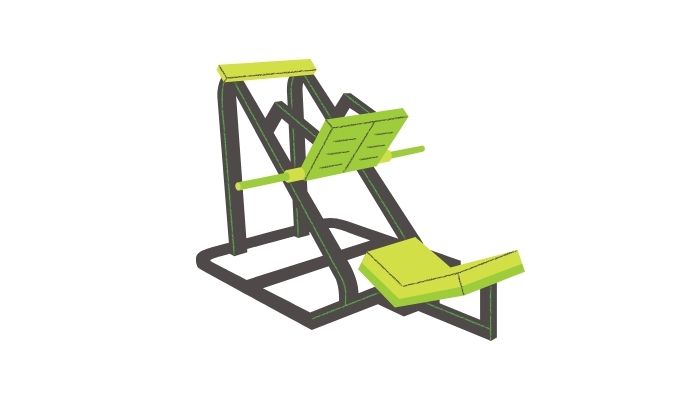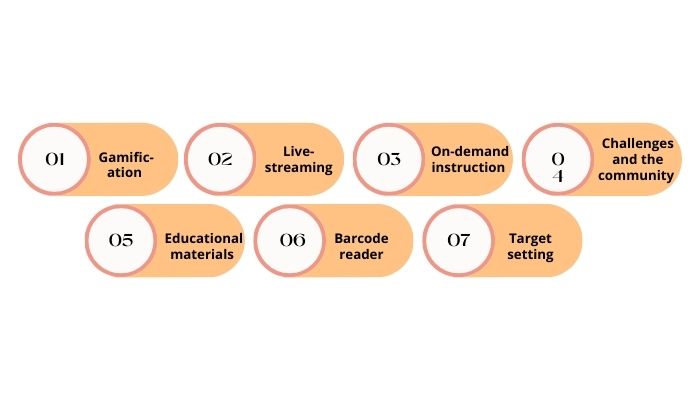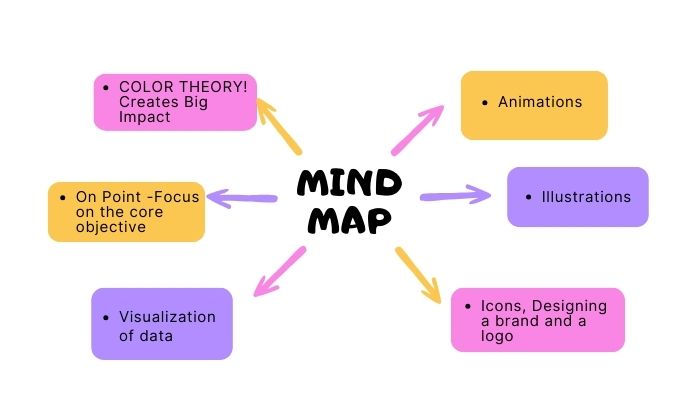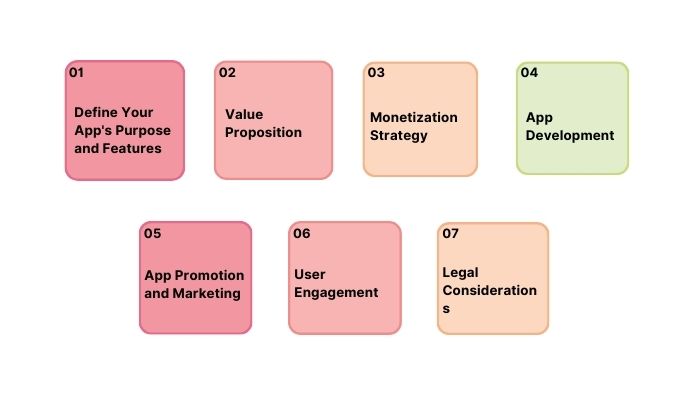Table of Contents
Ever used an app that just “gets” you? Thanks to technology that streamlines fitness app design based on user feedback. Designing tools have made wellness more accessible and exciting than ever. But what sets a great fitness app apart? It’s all about design!
Today, you can carry your fitness journey in your pocket. The fitness apps market is expected to generate US$19.33 billion in revenue by 2023. Market volume is predicted to reach US$33.04 billion by 2027, with revenue forecast to increase at a 14.34% CAGR from 2023 to 2027.
In 2023, there will be 9.76% of users, and by 2027, 12.21% of users are anticipated. Sports giants like Nike, Adidas, and Google have played a pivotal role in this revolution by developing cutting-edge fitness apps that cater to the masses.
In this blog post, we’re diving into the world of fitness app design. Get ready to discover how the right design can make your fitness app user-friendly.
Why Fitness App Design Is Crucial?

90% of the users reported that they had stopped using an app due to poor performance. The recent report suggests that a well-designed fitness app UX can raise conversion rates to 400%.
That’s the magic of thoughtful design. Beyond just looking good, a well-designed fitness app makes it easy for your users to reach their goals. Think smooth navigation, clear buttons, and visuals that keep your user hooked.
Another reason for good fitness app design is that it can create good revenue potential as the global fitness app market is expected to reach $19.33 Bn by 2029. This design wizardry is what makes fitness fun and progress rewarding. So it’s better to invest in the UI/UX design services before it’s too late. Let’s talk about the types of fitness apps in the next section.
Types of fitness apps
| Fitness App Types | |
| Workout Tracking | Apps that focus on tracking and logging exercise routines, sets, and reps. |
| Nutrition and Diet | These apps are designed to monitor calorie intake, plan meals, and track nutrition. |
| Activity Tracking | Apps that record daily activities, steps, and overall physical movement. |
| Meditation and Yoga app | They offer guided yoga sessions, meditation, and stress-relief exercises. |
| Running and Cycling | Apps for tracking running, cycling, and outdoor activities, with GPS support. |
| Virtual Personal Trainers | They provide personalized workout plans and coaching. |
| Health and Wellness | Comprehensive wellness apps covering fitness, nutrition, and overall health. |
| Social Fitness | Apps with social features for sharing progress and competing with friends. |
| Specialized Sports | The apps are tailored for specific sports, such as golf, swimming, or tennis. |
| Wearable Companion | These apps are designed to sync with fitness wearables for enhanced tracking. |
Fitness Design App: Key Features
We have discussed the types of fitness apps, now it’s time to look into the features. Top UX research firms focus more on features in fitness apps for better user experience.
Simple Design, Big Impact
Ever heard of “less is more”? That’s the mantra of smart fitness app design. Instead of being overwhelmed with features, it’s better to do app design research before starting out. Clean layout, easy-to-follow paths – it’s fitness app UI design that keeps your focus where it matters: on users fitness goals.
Therefore, creating a user-friendly fitness app is essential for ensuring a positive user experience and promoting long-term engagement. To achieve this goal, here are key features for fitness app design that prioritize user-friendliness:
· Intuitive User Interface (UI)
The first and most crucial aspect is to design a clean and straightforward UI with a user-friendly navigation menu, easily accessible workout libraries, and clear icons. Prioritize a simple and logical flow throughout the app.
· Personalized Onboarding
When you offer a personalized onboarding experience where users can set their fitness goals, specify their fitness level, and select workout preferences. This helps tailor the app to individual needs.
· User-Centric Workouts libraries
Present workout recommendations based on user preferences, goals, and fitness levels. Make it easy for users to find and start workouts that align with their interests and capabilities.
Moreover, offers a variety of workout routines categorized by type, difficulty level, and duration, such as “30-minute High-Intensity Interval Training (HIIT)” or “Beginner Yoga for Flexibility.”
· Clear Workout Instructions
Each exercise in a workout includes a video demonstration by a certified fitness instructor, ensuring users perform exercises correctly.
Plus, ensure that exercise instructions are concise, easy to follow, and supported by images or videos. Consider offering voice-guided workouts for added clarity.
· Progress Tracking Dashboard
Provide a centralized dashboard that displays users’ workout history, achievements, and progress charts. So that users should be able to easily track how far they’ve come.
· Simple Logging and Tracking
Allow users to log their workouts and nutrition with minimal effort. Also, implement features like barcode scanning for food items or automatic workout tracking when connected to the wearable.
· Reminder and Notification Settings
Let users set customizable workout reminders and notifications to help them stay consistent. When you design your own workout app ensure that notifications are non-intrusive and respectful of user preferences.
· Accessible Data Visualization
Make use of clear and intuitive charts and graphs to visualize progress data. Ensure that users can easily understand their fitness trends and improvements.
· Quick Access to Support
Include an accessible support or help center with FAQs, chat support, or email contact options. Users should feel supported and have easy access to assistance.
· Community and Social Features
Create a welcoming community within the app where users can connect with others, share achievements, and seek motivation. Incorporate social sharing options for workout accomplishments.
· Seamless Integration with Wearables
Ensure compatibility with popular fitness wearables, making it effortless for users to sync and view their data within the app.
Make sure the app syncs seamlessly with popular fitness trackers like Fitbit or Apple Watch to capture real-time data on steps, heart rate, and sleep patterns.
· Feedback and Rating System
Encourage users to provide feedback and ratings for workouts and app features. Use this feedback to continuously improve the user experience.
Additionally, users can leave star ratings and reviews for workouts and meal plans, and the app’s feedback system helps improve content quality.
· Synchronization with Calendar and Reminders
Lastly, it doesn’t matter if it’s a fitness app or yoga app UI make sure to offer the option to sync workout schedules with the user’s device calendars and set reminders for upcoming workouts or meals.
Additional Features For the Fitness App

The current improvements we covered are crucial, but what more might set your app apart while working with a workout design app? These extra features not only distinguish your goods from the competition but can also meet the unique needs of your customers.
· Gamification
This could provide consumers with an extra burst of motivation through enjoyment. To get people even more involved, you can provide various prizes, badges, and levels to fulfill.
· Live-streaming
Groups for training can be organized live by professional coaches, and people can relate to & mimic the trainer. By doing this, people will be able to come together in a group with shared interests.
However, they can speak with a coach and go over certain issues.
· On-demand instruction
Users can schedule personal training sessions with qualified coaches. The app has to have a timetable if you want to offer this option. Coaches will be able to handle each of their clients as a result.
· Challenges and the community
Boost the level of competition. You can set up user leagues where points are awarded for each goal scored. Users who have a lot of points can advance to the next league level. Users can be rewarded with badges or even play for free.
· Educational materials
Users may find text instructions, informative articles, and video tutorials fascinating and useful. The interaction with your app may rise if you offer this function.
· Barcode reader
It is a feature that diet and nutrition applications may find to be quite helpful. Instead of looking for the product in the database, it is simpler to scan the barcode. People dislike waiting around for too long. Additionally, this can assist in learning more about the producer and the overall makeup of the product.
· Target setting
Setting goals might encourage some people. Allow them to obtain everything they desire. Ensure that the app is accessible to users with disabilities by adhering to accessibility guidelines and providing features like voice commands and screen reader compatibility.
UI Design Guidelines for Fitness Apps

A fitness mobile app design functions as a small instructor who demonstrates how to stay in shape and provides encouragement and feedback for your successes. You should consider an effective fitness app UI design to make this more cozy and usable. Look at these details to make it:
· COLOR THEORY! Creates Big Impact
Our ability to see color has a strong impact. For this reason, picking the appropriate color scheme for your fitness app’s UI design is crucial. It’s recommended to use color psychology in app design and & save yourself from inappropriate color choices. That may compromise your product’s usability and readability. It’s vital to see things properly while shaking because users may use your app while engaging in physical activity.
Additionally, it is essential to take your target audience’s tastes into account. Depending on an individual’s age, culture, and gender, they may prefer a particular tint of color. Try to get design ideas for fitness apps. You’ll discover that light and vibrant colors are frequently used in the UI design of fitness apps.
· On Point -Focus on the core objective
It’s crucial to avoid clogging up screens with pointless data. Screens shouldn’t appear disorganized, so it’s better to do the latest research in UI design trends.
However, people download fitness apps with a certain purpose in mind when they do so, the user interface (UI) design of the fitness app should be clear and fluid to prevent user distraction.
· Visualization of data
When it comes to visualizing data on user behavior, diagrams of all kinds are fantastic. Even without a lot of text, it is still understandable. Even if the user leads an active life, this form of visualization doesn’t overcrowd the screen, making the fitness app UI design look tidy.
After all, individuals use fitness apps to view activity information.
· Animations
To include amusing features in your fitness app design, you might offer loading or progress animation. Additionally, users would want to share nicely made animations with others, which could attract new users to your app.
In order to encourage interactivity, you can also animate charts and graphs in your app. However, it can aid in improving the design of exercise programs.
· Illustrations
Illustrations are effective for drawing the user’s attention to anything. They perform admirably for onboarding lessons. However, it looks fantastic when you want to demonstrate to consumers how a specific activity works.
Additionally, it will provide your fitness app’s UI design with more customization. If you want to develop a user-centered design, that is crucial.
· Icons, Designing a brand and a logo
You can lessen text-heavy screen clutter by presenting several activity categories. Because it offers potential customers their first impression of you, branding is significant. They might have certain associations as a result and know what to anticipate from your product.
Consider the impression you wish to leave. Friendly? Reliable?
The logo is one of the primary branding elements. When considering the value of investing in your exercise logo design, keep in mind that it needs to be memorable and catchy in order to set you apart from your rivals.
No matter how many fitness applications there are, you can still make yours stand out. You may create a standout app with the aid of practical features, excellent UX, and appealing fitness app UI design.
Guide To A Smooth Fitness App Development

Starting a fitness app can be a rewarding venture, but it requires careful planning and execution. Here’s a more detailed guide on how to start a fitness app:
1. Define Your App’s Purpose and Features:
Decide on the type of fitness app you want to create. Consider options like workout tracking, nutrition planning, yoga, meditation, or a combination of these.
Identify the key features your app will offer, such as exercise routines, meal planning, progress tracking, social interaction, or personalized recommendations.
2. Value Proposition:
Clearly define what unique value your app provides to users. What problem does it solve, and how does it make users’ fitness journeys better or easier?
Differentiate your app from existing competitors by focusing on your unique selling points.
3. Monetization Strategy:
Explore various monetization options for your fitness app:
- Subscription Model
Charge users a monthly or annual fee for access to premium features.
- In-App Purchases
Offer virtual goods or additional content for a fee.
- Ads
Display advertisements within your app (consider this carefully, as it can affect user experience).
- Affiliate Marketing
Partner with fitness-related brands and earn a commission on sales generated through your app.
4. App Development
Now after deciding on the monetization hire a development team or work with freelancers to build your app. Ensure it is user-friendly, visually appealing, and functions smoothly.
Moreover, focus on creating a robust backend for data storage and analysis, as fitness apps often require handling large amounts of user data.
5. App Promotion and Marketing
It is the most essential process after the development of a fitness app. You need to develop a comprehensive marketing strategy to make people aware of your app.
- Start with creating a website and landing page for your app.
- Utilize social media platforms to engage with potential users.
- Run targeted advertising campaigns on platforms like Facebook, Instagram, or Google Ads.
- Collaborate with fitness influencers or trainers for endorsements and reviews.
- Attend fitness events or conferences to showcase your app.
6. User Engagement
Retaining users is crucial for the success of your fitness app. Consider strategies like:
- Push Notifications are essential to send reminders for workouts, meal planning, or milestones achieved.
- Personalization by using AI and user data to provide tailored workout plans and nutrition recommendations.
- Feedback and Improvement are also necessary to make sure to continuously collect user feedback and reviews to identify areas for improvement.
Also don’t forget to regularly update your app to fix bugs, introduce new features, and enhance user experience.
7. Legal Considerations
Lastly, ensure compliance with data privacy regulations like GDPR or HIPAA if you handle sensitive user data. Very important – Protect your intellectual property with proper copyright and trademark registrations.
Starting a fitness app requires dedication, a clear vision, and ongoing effort. By carefully considering these steps, you can create a fitness app that stands out in the market and helps users achieve their fitness goals while generating revenue for your business.
Conclusion
Fitness applications are difficult like other apps, it doesn’t matter whether you design a yoga website or fitness app. You must address various questions before building any fitness app design. The idea of your app? Is it relevant? Is there demand? Who do you create for? User interaction with fitness app design? Answering these questions will clarify your future app’s functionality and design guidelines for fitness apps.
Contact UI/UX agencies or us if you have a great fitness app idea! With experience in this field. Our knowledge comes from working with many startups, existing businesses, and coaches. We’ll gladly collaborate on a new fitness app that could change the market!





No Comments
Comments are closed.